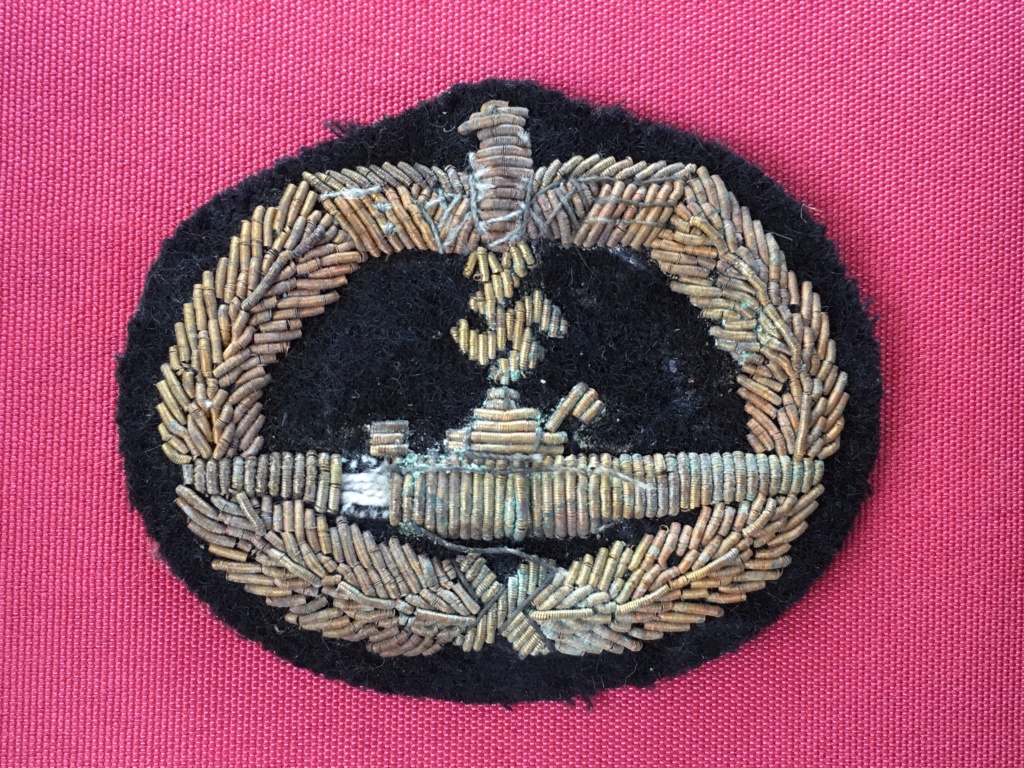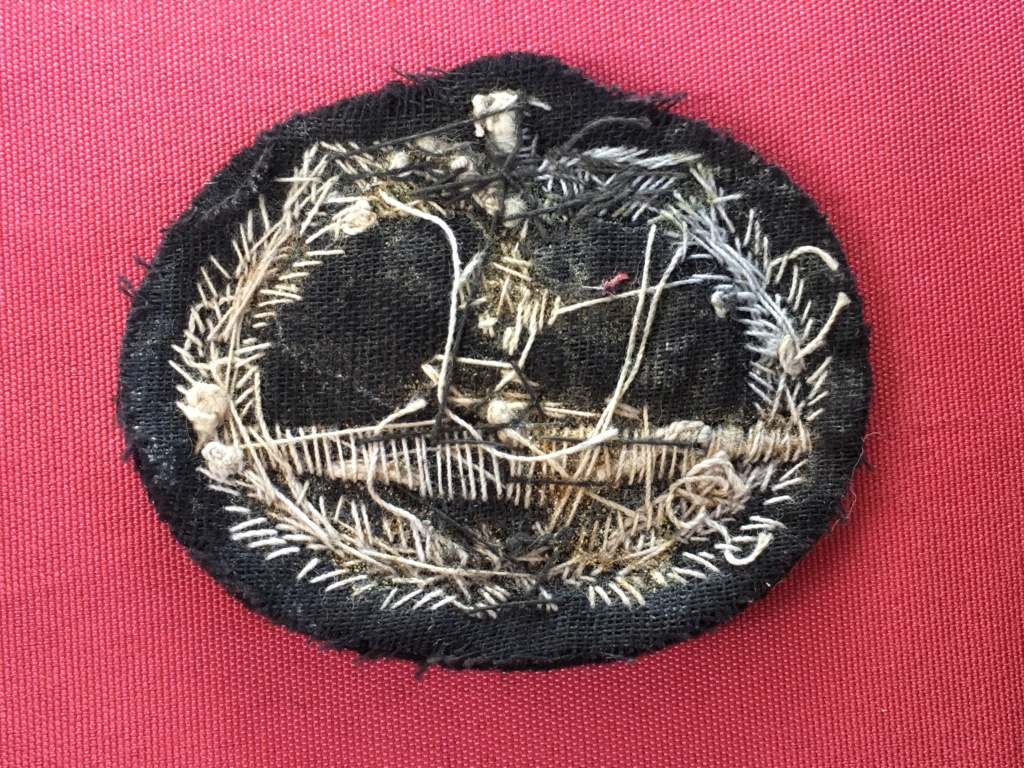Announcement
Collapse
No announcement yet.
U Boot badge cloth version
Collapse
X
-
Hi S.
In my opinion, that is likely an artificially aged post-war patch from the same source as this one posted by Hubert almost six years ago:
http://wehrmacht-awards.com/forums/s...21#post6185821
The type of "French-made" bullion U-boat patch that I think has a chance of being wartime is the type seen here:
http://wehrmacht-awards.com/forums/s...d.php?t=883185
Best regards,
---Norm
-
It's easy to artificially age copper based alloys in anywhere between 2 and 15 days by soaking in various solutions as seen in this article:
https://www.sciencedirect.com/scienc...69433217300818.
And I get the impression the green staining of the thread doesn't look like a natural process.
Best regards,
---NormLast edited by Norm F; 07-24-2019, 10:09 PM.
Comment
-
Thanks for the reference to copper corrosion. The threads that you are referring to look like copper or a copper alloy and could, corrode under various conditions. Copper happens to be the least resistant to corrosion while copper alloys are less so.
I based my original statement on construction of the badge. I'm very familiar with some of the Paki repros that have flooded the market over the last twenty years, and if this is a reproduction, it does not mirror those examples. This does not mean that it is an original, but it certainly has a reasonable probability of being an original.
Comment
-
Hi 101combatvet,Originally posted by 101combatvet View PostI based my original statement on construction of the badge. I'm very familiar with some of the Paki repros that have flooded the market over the last twenty years, and if this is a reproduction, it does not mirror those examples. This does not mean that it is an original, but it certainly has a reasonable probability of being an original.
Are you saying that just the patch from the opening post might be original and not the very similarly constructed one in the side-by-side comparison? That second similar one is almost certainly a reproduction as discussed here?
I wasn't suggesting Pakistani origin (I don't know where they're made), and if it is artificially aged I think of that as more of a European practise.
I feel it mimics the French aesthetic more than the Italian aesthetic for bullion insignia (the presumably Italian style seen here).
Best regards,
---Norm
Comment
-
I am just referring to the original badge that started this thread. Correct, on the Paki origin and I was using that as the most commonly encountered example. I did some comparisons of their bullion thread and older examples from WW2, many variations to compare. However, there is a pattern that is consistent with British, Italian, Indian, Japanse, and German-made examples, both front, and back must be considered. I am not so familiar with the French-made pieces, but it makes sense that they were made near the German Naval bases. You may be correct on the French connection; I'm basing my assessment on examples in my collection, much of which are Italian made.Originally posted by Norm F View PostHi 101combatvet,
Are you saying that just the patch from the opening post might be original and not the very similarly constructed one in the side-by-side comparison? That second similar one is almost certainly a reproduction as discussed here?
I wasn't suggesting Pakistani origin (I don't know where they're made), and if it is artificially aged I think of that as more of a European practise.
I feel it mimics the French aesthetic more than the Italian aesthetic for bullion insignia (the presumably Italian style seen here).
Best regards,
---Norm
Comment
-
Hi 101combatvet,Originally posted by 101combatvet View PostThanks for the reference to copper corrosion. The threads that you are referring to look like copper or a copper alloy and could, corrode under various conditions.
The accent threads I was referring to aren't wire but rather regular fibre spun thread -- I've indicated them with red arrows in the attached image. These shouldn't corrode, but instead appear to have been coloured by whatever solution the obverse was soaked in.
In the linked article they induced accelerated corrosion with hydrochloric acid and/or CuCl2 in the presence of water, either by immersing in solution or exposing to acidic vapours. Alternatively, they also used CuSO4 solution and heat.
I'm not a chemist, but to my mind, the obverse threads shouldn't have that blue-green tinge unless soaked in a fluid that colour. Normal exposure to salty sea air should not turn non-cuprous thread that colour, in my opinion.
Best regards,
---NormAttached Files
Comment
-
Can we confirm the thread type which is corroded by the owner? Also, in regards to the rear, I have seen two to three different thread colors used, that might not be discolorization during an aging process.
The only thing that could raise alarms for some is the absence of a Unterlagen in cardboard. It's possible that so few of these badges were produced that it wasn't necessary with this maker.
Comment
Users Viewing this Thread
Collapse
There are currently 3 users online. 0 members and 3 guests.
Most users ever online was 10,032 at 08:13 PM on 09-28-2024.



Comment